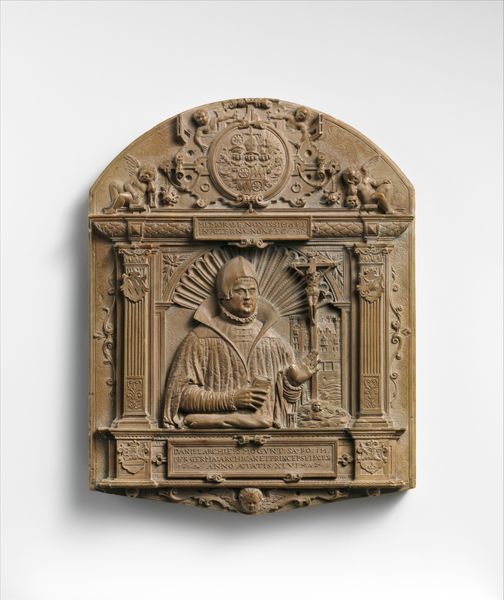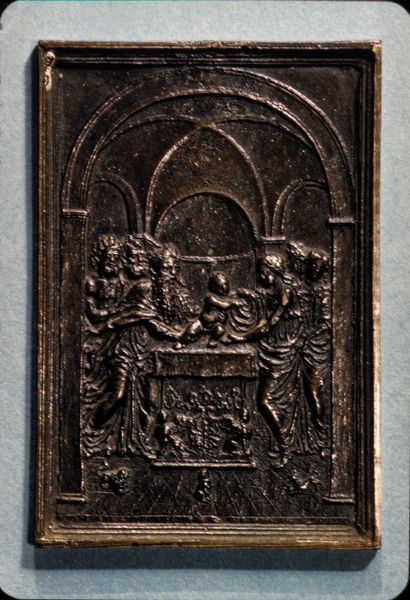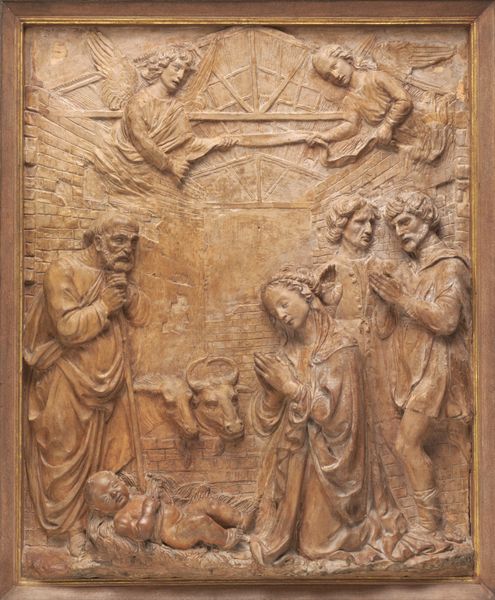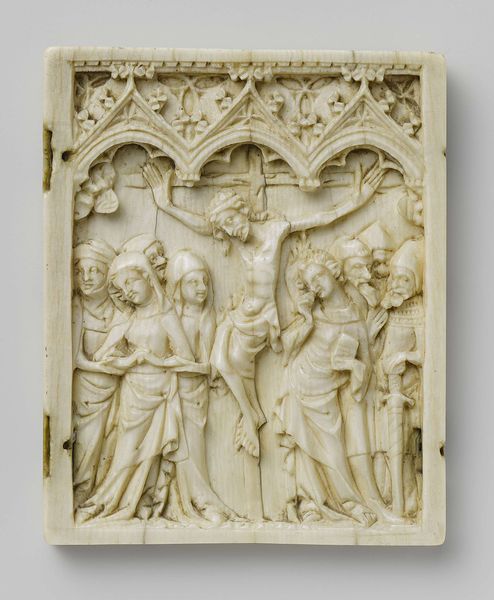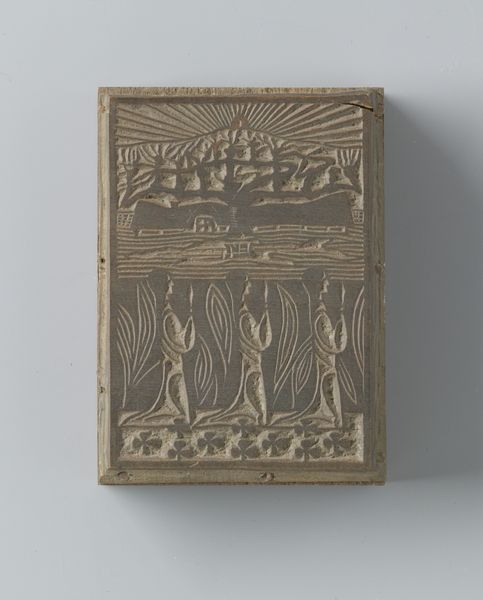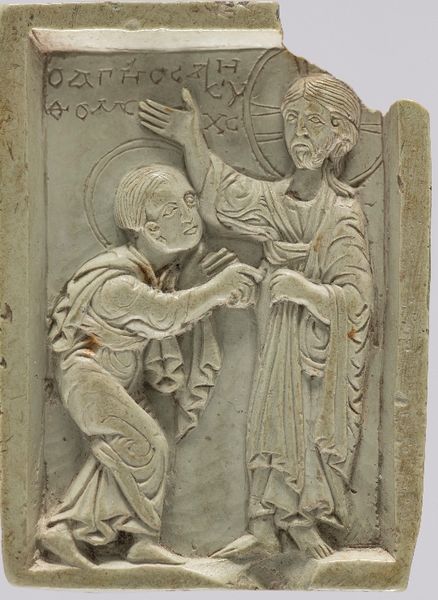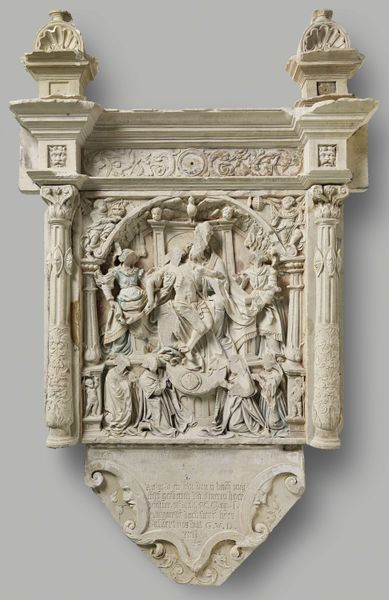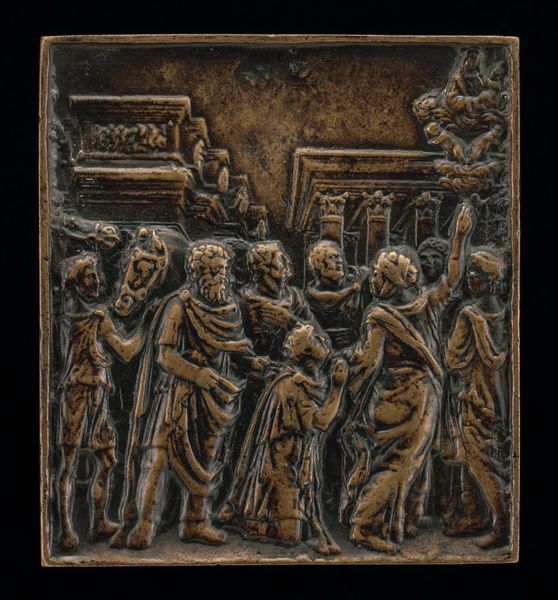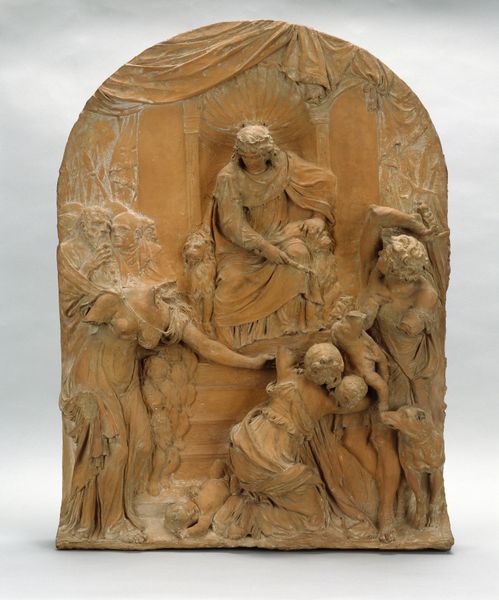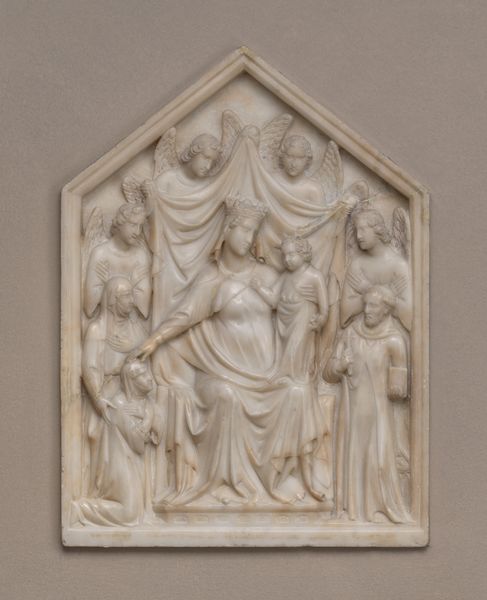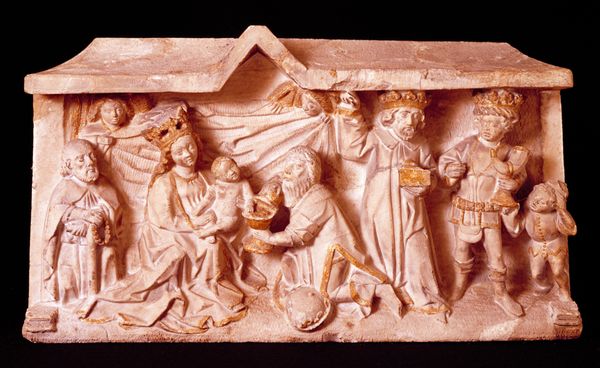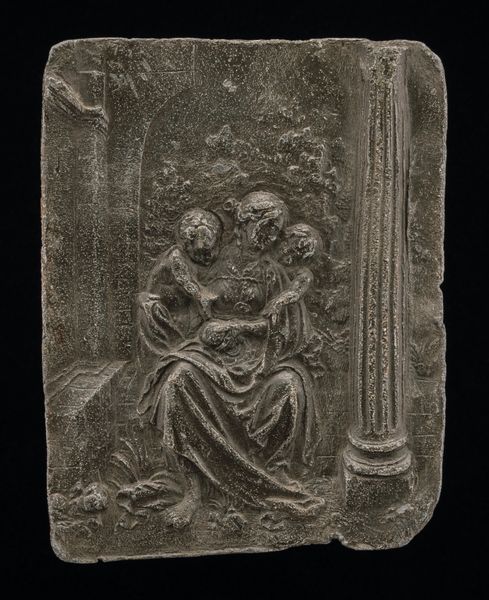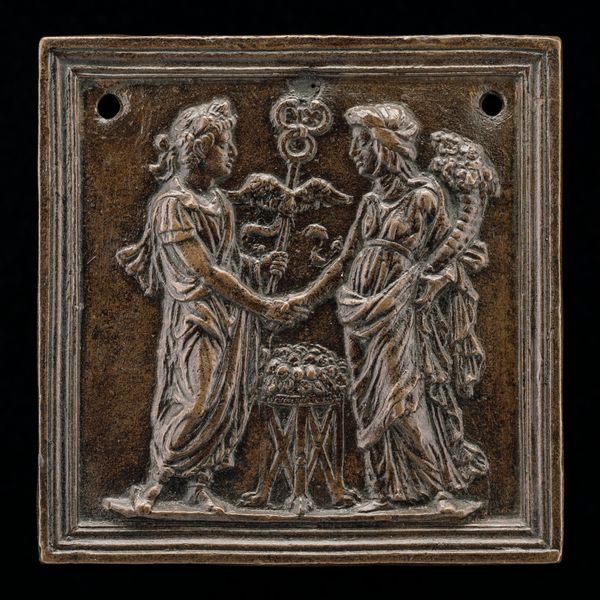
The Presentation of Christ in the Temple 1492 - 1498
0:00
0:00
relief, bronze, sculpture
#
narrative-art
#
stone
#
sculpture
#
detailed texture
#
relief
#
bronze
#
figuration
#
sculpture
#
men
#
history-painting
#
italian-renaissance
#
statue
Dimensions: 10 x 6.4 cm, wt. 135.54 g.
Copyright: Public Domain
Curator: Behold "The Presentation of Christ in the Temple," a bronze relief sculpture created by Moderno, or Galeazzo Mondella, between 1492 and 1498. It’s currently housed at the Metropolitan Museum of Art. Editor: It strikes me as a study in controlled chaos. The figures are crammed into this relatively small space, yet each retains a distinct identity, especially considering the medium. Curator: Precisely. The composition adheres to a structured symmetry, doesn’t it? Note the archway above, mirrored by the lines of the floor, framing the central action. It creates a visual stability, wouldn’t you agree? Editor: Visually, yes, but think about the labor that went into each minute detail, each ripple of drapery, each strand of beard. The figures feel less like idealized forms and more like meticulously crafted objects, testament to an artisan’s skill. And to think bronze casting itself, especially the lost-wax technique typically employed in that era, was highly prized. Curator: Undoubtedly. Consider how the relief allows for a nuanced rendering of space and depth, crucial for conveying narrative clarity. The poses are graceful, idealized, capturing the gravitas of the moment: Christ's presentation fulfilling ancient prophecy. Editor: The placement of Christ onto the altar focuses not only on spiritual significance but is also physically made through labor. You can see those small details on the surface are what allows light to catch and move, the interplay emphasizes both the textures and the volume, almost creating a constant shift within something cast from a dense metal. Curator: The light, you are correct, illuminates symbolic meaning. Moderno subtly draws the viewer's eye toward essential features such as facial expressions to engage with its sacred narrative. It is a superb demonstration of humanist ideals expressed through form and spatial organization. Editor: For me, this isn’t about idealized humanity as much as the grounded physicality of bringing the divine into the material world. This isn't only Renaissance refinement; it is an homage to labor intensive devotional objects. Curator: Fascinating, isn't it, how an artwork can hold such differing interpretations within its finely wrought form? Editor: It makes us consider how meaning isn’t solely encoded in design but in the way artistry and the laboring process give shape to our experiences of holiness and the historical conditions that enable art.
Comments
No comments
Be the first to comment and join the conversation on the ultimate creative platform.
